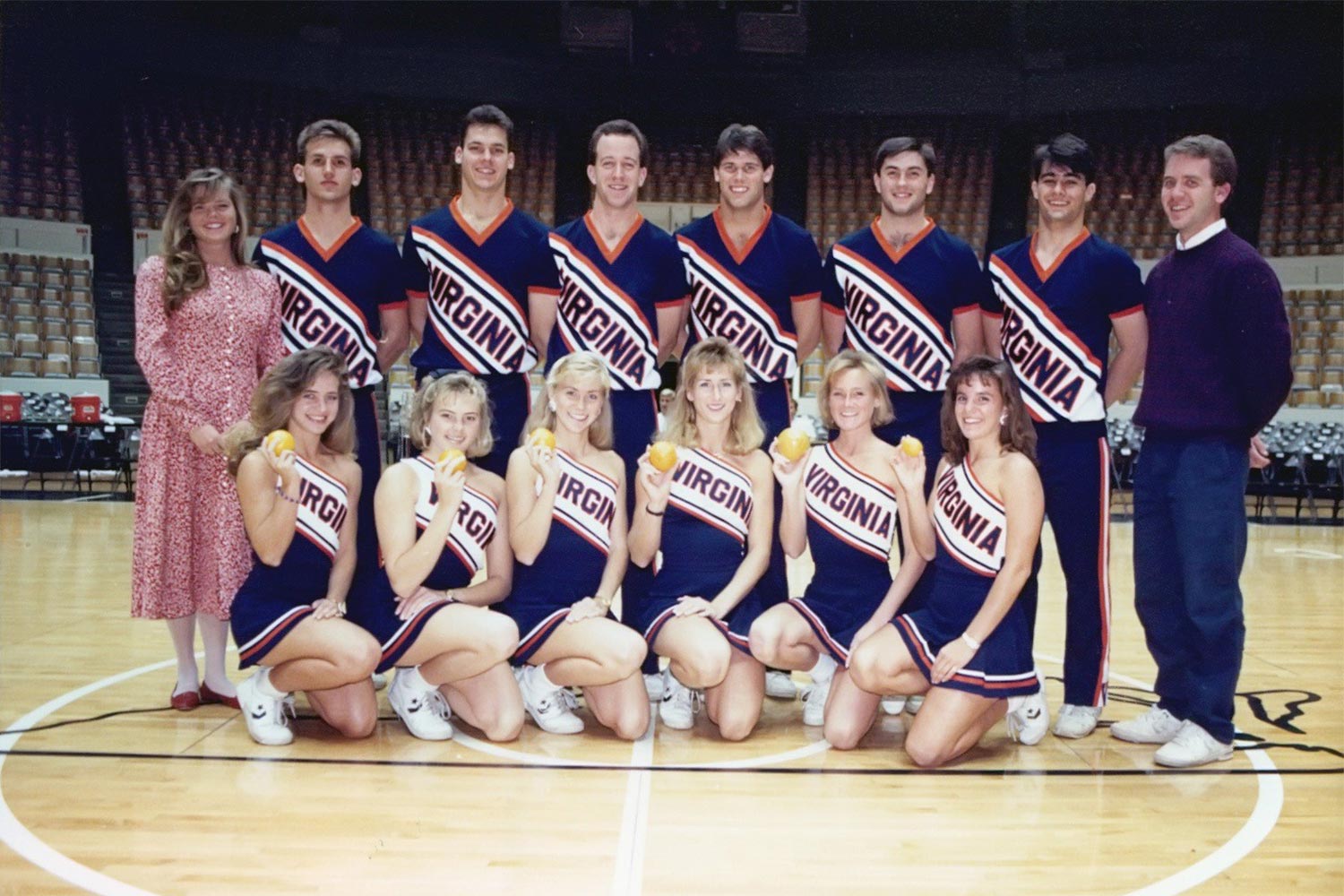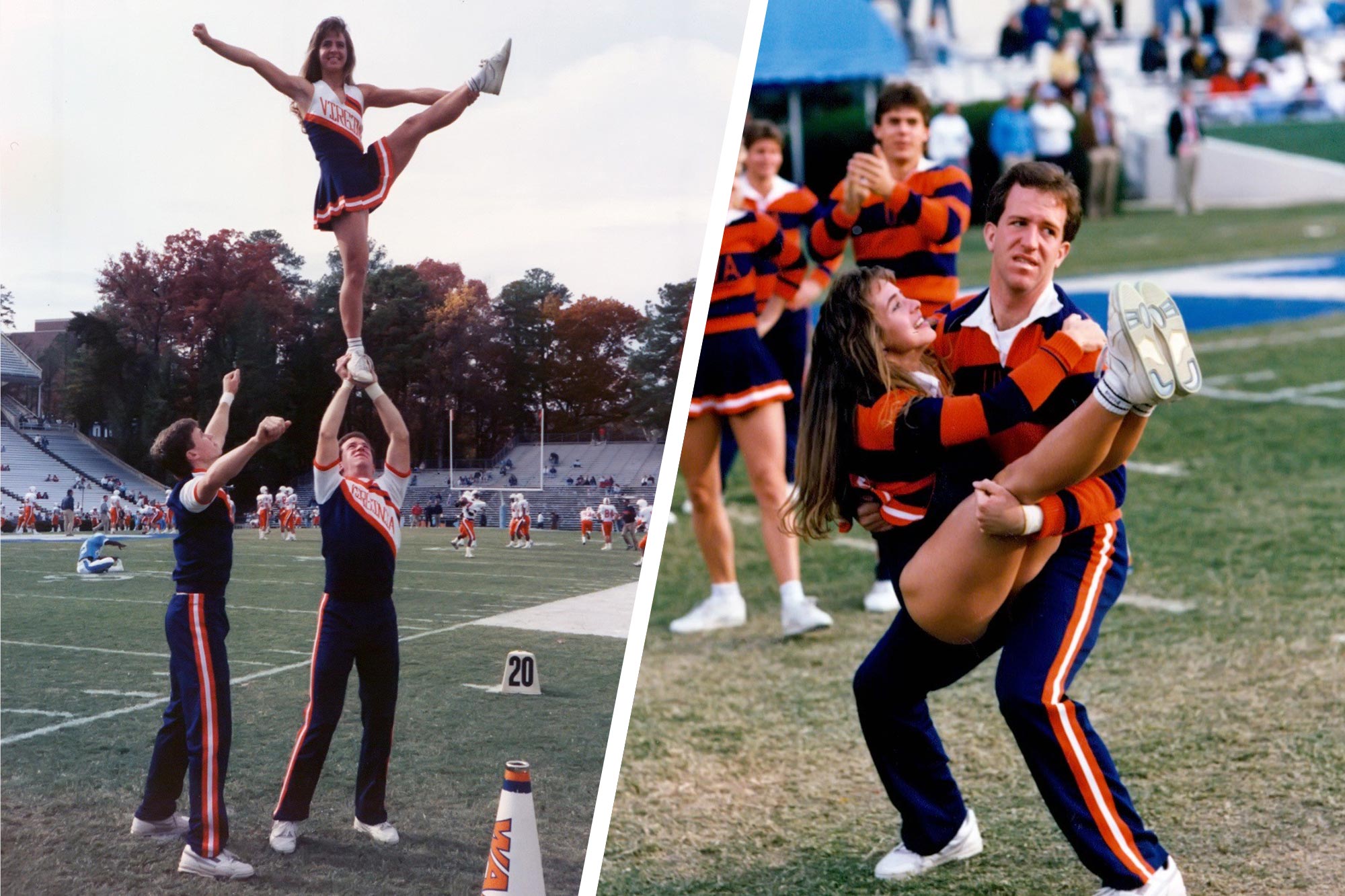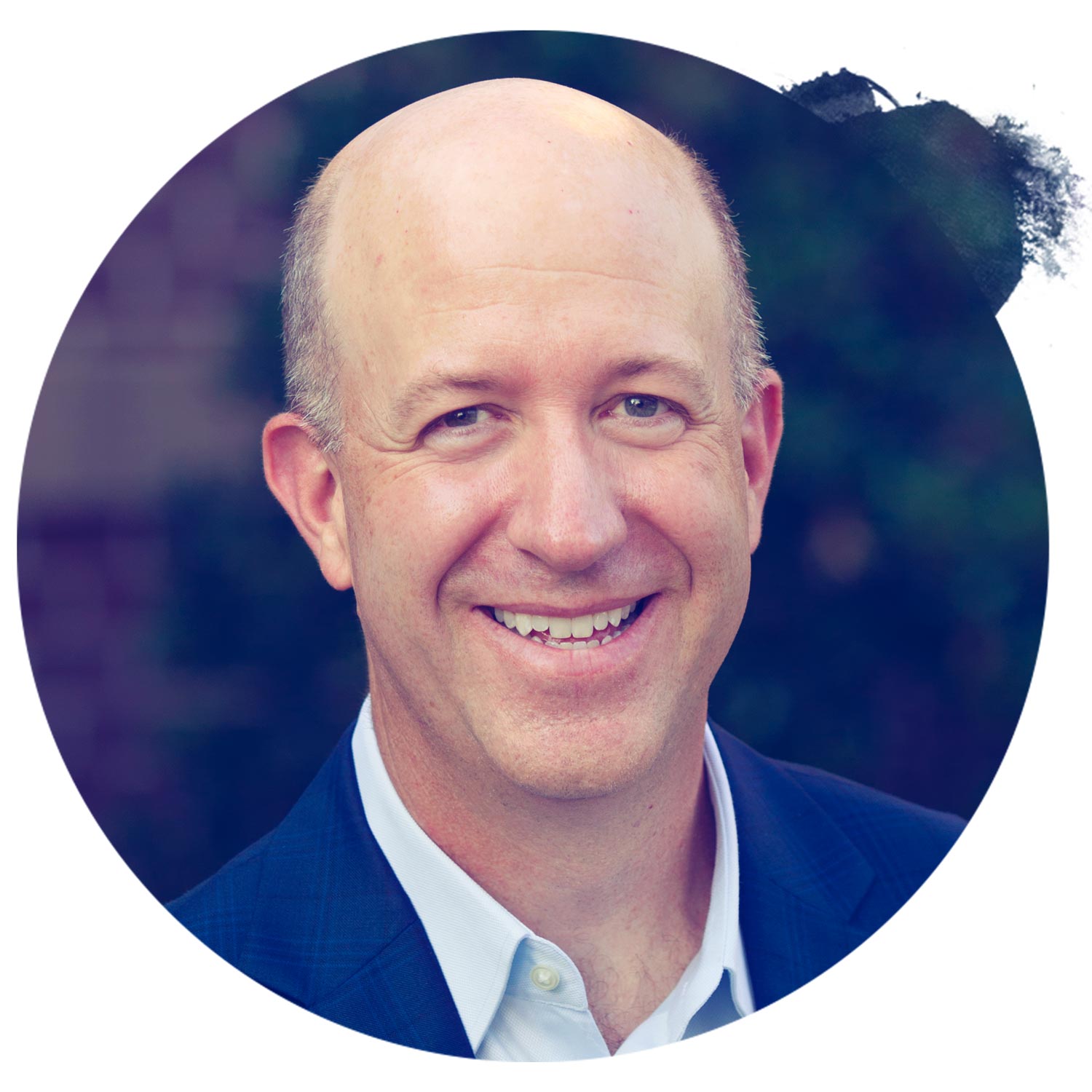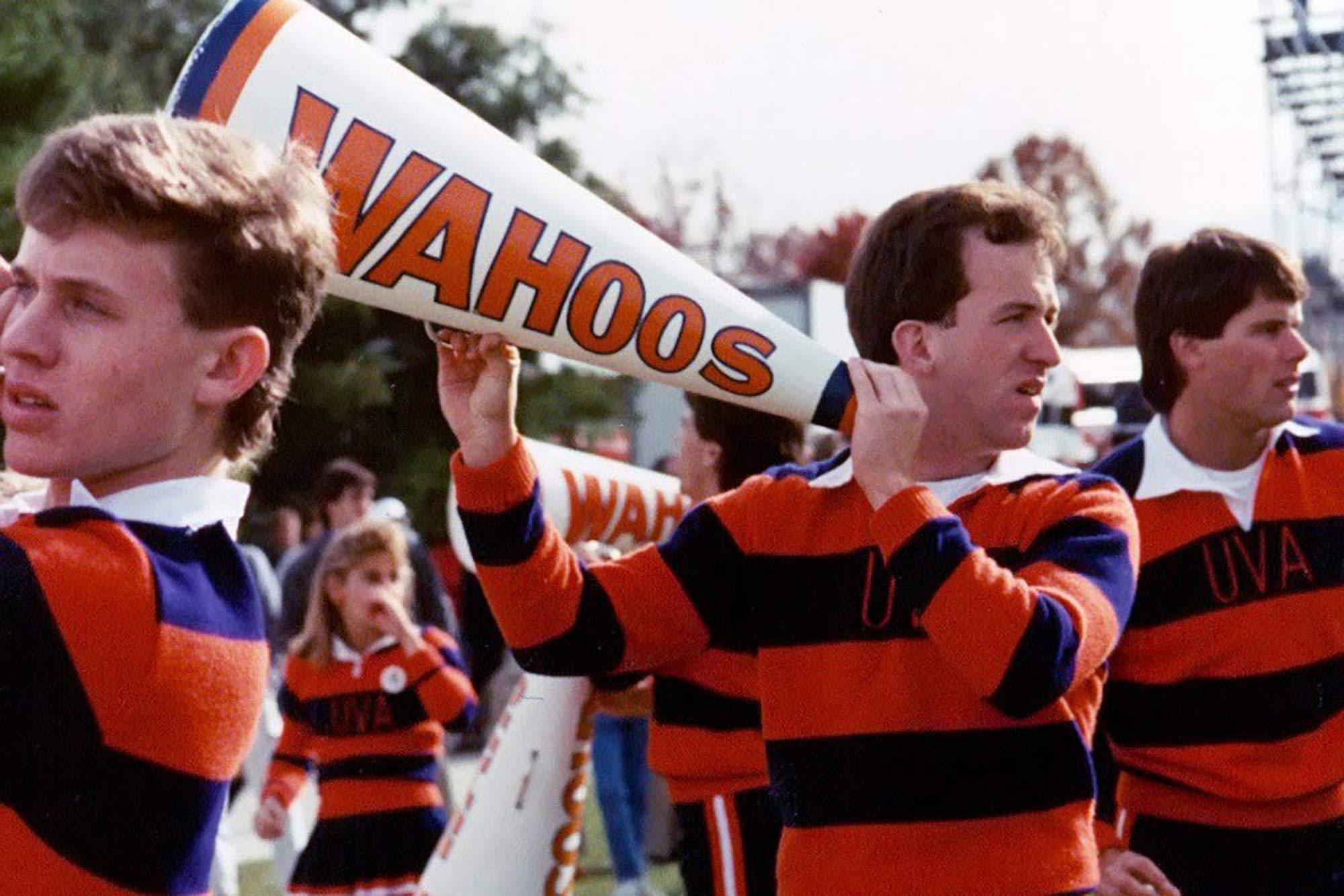Even by phone, it will not take you long to figure out the thing that is central to Craig Wood’s character: he is a former cheerleader.
Wood came to the University of Virginia from Overland Park, Kansas in 1986 and didn’t know a soul. That was on purpose. The student council president at Shawnee Mission South High School, Wood wanted to put himself in a position where he had to build his college life from the ground up.
Eager to dig into his new surroundings, he spied an ad for cheerleading tryouts two days in to his first year and headed to Onesty Hall. The goal was simple: to meet people, and in particular, girls.

The next thing he knew, he had been talked into joining the junior varsity squad. Buoyed by his high school cheering experience, Wood thrived. He was moved up to the varsity squad at the end of his first year and lettered all of his four years at UVA.
Now, he is using his cheering background to help build a new agency in Washington, D.C., a marketing and experience design agency called 360 Live Media. He is also sharing his life lessons with his two college-aged daughters, one of whom is a rising third-year student at UVA. They find his cheerleading background both a source of humor and pride, he said.
Wood, who graduated from the McIntire School of Commerce in 1990, spoke with UVA Today about what it was like to manage a tough class schedule with being in a Division I varsity sport. He even dropped some cool cheerleading lingo. Read on for all of the tantalizing details.
Q. What brought you to UVA?
A. (Laughing) To get away from Kansas! I wanted to go to a school where I knew nobody, where I would have to make a name for myself.
I think like most UVA students, I had a successful high school career. I was president of the student council, captain of the track team, actually was a cheerleader in high school. I had a lot of places I applied to and I got into the Engineering School at UVA, which is surprising given what I am doing today. I came to visit and UVA did a wonderful job of setting me up with current students who shared my interests and passions, and I fell in love and left saying, ‘This is the place for me.’
Q. What drew you to cheerleading in high school?
A. At my high school, if you didn’t play football, cheerleading was something that was pretty popular. You had a chance to hone your public speaking skills, you got to hang out with fun people. It was sort of a social club. It was a cool thing to do. If you didn’t have a sport in the fall, which is football season, people tried out for the cheerleading team.
All the rival high schools had yell leaders, so you learned how to do stunts and you got to be part of the action without getting hit and beat up like the football players.
Q. Can you talk about that first meeting with the junior varsity team?
A. Because I had been a cheerleader, I knew I wasn’t going to embarrass myself.
I showed up at tryouts and I was the only guy. Over the next couple of weeks, we got enough people to form a JV squad. I got moved up to varsity at the end of my first year, so I was on the floor for NCAA Tournament games. I was varsity my last three years and captain the last two years.
It ended up being my fraternity. It’s a hard-core commitment – and all because I wanted to meet people (namely, girls), because I knew no one at UVA when I arrived..
Q. You were the only guy to try out for junior varsity in 1986. What was the turnout four years later?
A. I think the proudest moment came in my last year as captain, when we had almost 75 guys try out for the squad. We made it kind of a cool thing to do. It was not a nerdy thing to do. It was a place where you got to be part of the action. You got to be part of a varsity sport.
If you look at other schools, there are a lot of former football players who are on these squads – Kentucky and N.C. State and Georgia and LSU … It had never been that way at UVA, and we brought a little bit of the cool to it. We were people others wanted to be around.
I became good friends with people who were varsity athletes – guys like Dirk Katstra [now the executive director of the Virginia Athletics Foundation], who was a year younger than me and a varsity basketball player. Matt Blundin was a good friend of mine; he was captain of the football team. All of a sudden, the cheerleading squad was hanging out with the football players and the basketball players and the women’s basketball players and the soccer players – I think people saw it as maybe cooler than they thought.
Q. What makes a good cheerleader?
A. You have to be confident because it is probably something [where] people look at you a little bit askew. And you’re wearing a polyester uniform, so there is a level of confidence that’s definitely required. Most cheerleaders I know have a level of built-in enthusiasm – an optimism of how you present yourself, that helps to define who they are.
Surprisingly, it doesn’t take as much strength as you might think. It actually takes great technique, and I think that’s what separated us from other squads that had pure, beefy guys. I could hold a girl over my head on one hand because I knew the technique, not because I was the strongest guy in the world.
Q. What kind of a commitment did it take to be a cheerleader on a Division I squad?
A. We practiced three hours a day, five to six days a week and traveled with the teams. So you had to really know how to balance athletics and school, and I think that’s no different from any Division I athlete. When people hear that, they better understand why cheerleading is a Division I athletics program. Our season would go up through the beginning of football season to the last NCAA basketball game. At the time, the varsity team cheered basketball and football and the junior varsity squad cheered soccer and women’s basketball. You would also make appearances at all kinds of places like pep rallies, local fundraising events, and the like. You were active the whole year. I barely had a Thanksgiving or Christmas break or a spring break during my four years in Charlottesville.

Craig Wood and his teammates, some holding oranges, in anticipation for UVA’s appearance in the Citrus Bowl in 1989.
Q. What were some of the highlights?
A. We had two bowl games in our four years. The first bowl game was the All-American Bowl game in Birmingham [Alabama] in 1987. We beat BYU, 22-16, and we flooded the town with $2 bills. This was the vision of Sandra Welsh, who was [head football coach] George Welsh’s wife. She wanted to flood the town with Thomas Jefferson, so they gave us our per diem in $2 bills. I still have to this day a $2 bill in the scrapbook that I have with the final score, which is one of the reasons I remember that.
In 1989, we went to the Florida Citrus Bowl in Orlando and got crushed by Illinois. That was a New Year’s Day bowl in 1989, the year before we went to No. 1.
Q. What were the practices like?
We would start off with stretches and warming up like any other practice – the practices would be two to three hours, depending on what we were working on. It was hard core. You had a partner you throw the stunts with – you don’t “do” the stunts, you “throw” the stunts.
We’d say, “Hey everybody, let’s throw a pop-chair or a liberty or do a kewpie doll or a toss-to-hands,” or whatever the case would be. You’d spend about 45 minutes working with your partner on individual stuff and then we would work on routines, including choreographed routines; we didn’t do a lot of dancing as guys, so that was mainly the women – we sort of stood behind with our megaphones trying to look cool. Then we would work on pyramids and that took the final hour’s worth of practice.

Craig Wood in his prime cheering on the Cavaliers.
Q. Can you describe some of the stunts?
A. A pop-chair is when you hold the girl by her waist and you throw her up and catch her on the palm of your hand. She has one leg bent. That’s called a “chair” and is the most basic of moves. A toss-to-hands is where you have the same beginning motion. You grab her by the waist, she bends down, you throw her up and you catch both of her heels with your hands at shoulder-height. That’s sort of the foundation of all the stunts. A “liberty” is a move where you start with “toss-to-hands,” you throw them up and catch them above your head on one foot and the other foot they are holding up next to their ear.So it looks like the Statue of Liberty. A kewpie doll is one where you throw her up and you catch her, both feet on one hand above your head.

Today, Craig Wood is the managing director & chief engagement officer at a firm that helps associations spread their message.
Q. How has cheering impacted you?
A. I think it really gave me a tremendous amount of confidence. It doesn’t matter what other people think, I loved cheering. I loved what it represented. I think it gave me the understanding that you make the most of whatever situation you want to be in. I loved being in the middle of the action, trying to motivate and drive others
It’s allowed me to share life lessons with my kids. I’ll occasionally bring up an old cheerleading story; they will roll their eyes. It enabled me to have a repository of things that I’ve been able to bring to life for my kids. Things like: How did I balance being a varsity athlete and all my schoolwork? Or how to deal with adversity. As an example, at a school that will remain nameless, I was spit on twice. I’ve trotted that out simply as the disrespect that can come in life and how you deal with it. There were some less disrespectful, more playful things. At another school, they were known to throw big marshmallows at cheerleaders, so that was sort of a rite of passage.
Q. How do you apply lessons from cheerleading in your work?
A. We are a small agency trying to build awareness in the marketplace. My optimism, enthusiasm and positivity, I think, carries over to the team, our clients and future clients. When I tell people I was a cheerleader, they look at me and say, “I’m not surprised.”
Media Contact
Article Information
June 12, 2017
/content/cheerleading-and-leadership-go-hand-hand-alumnus

